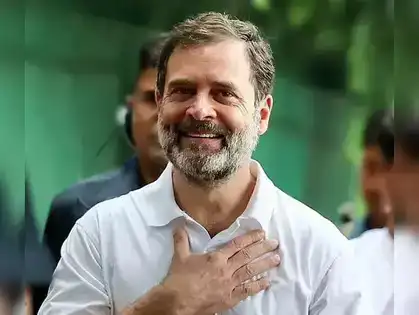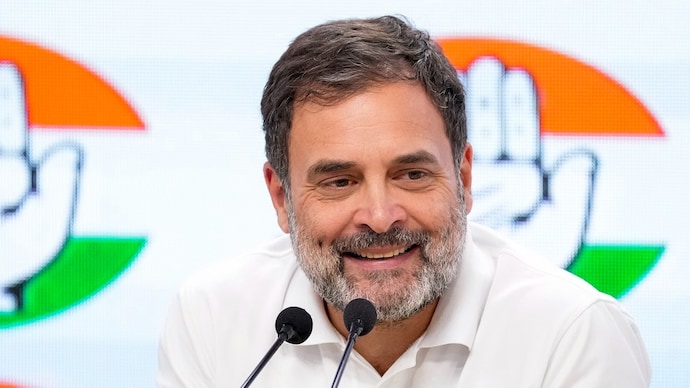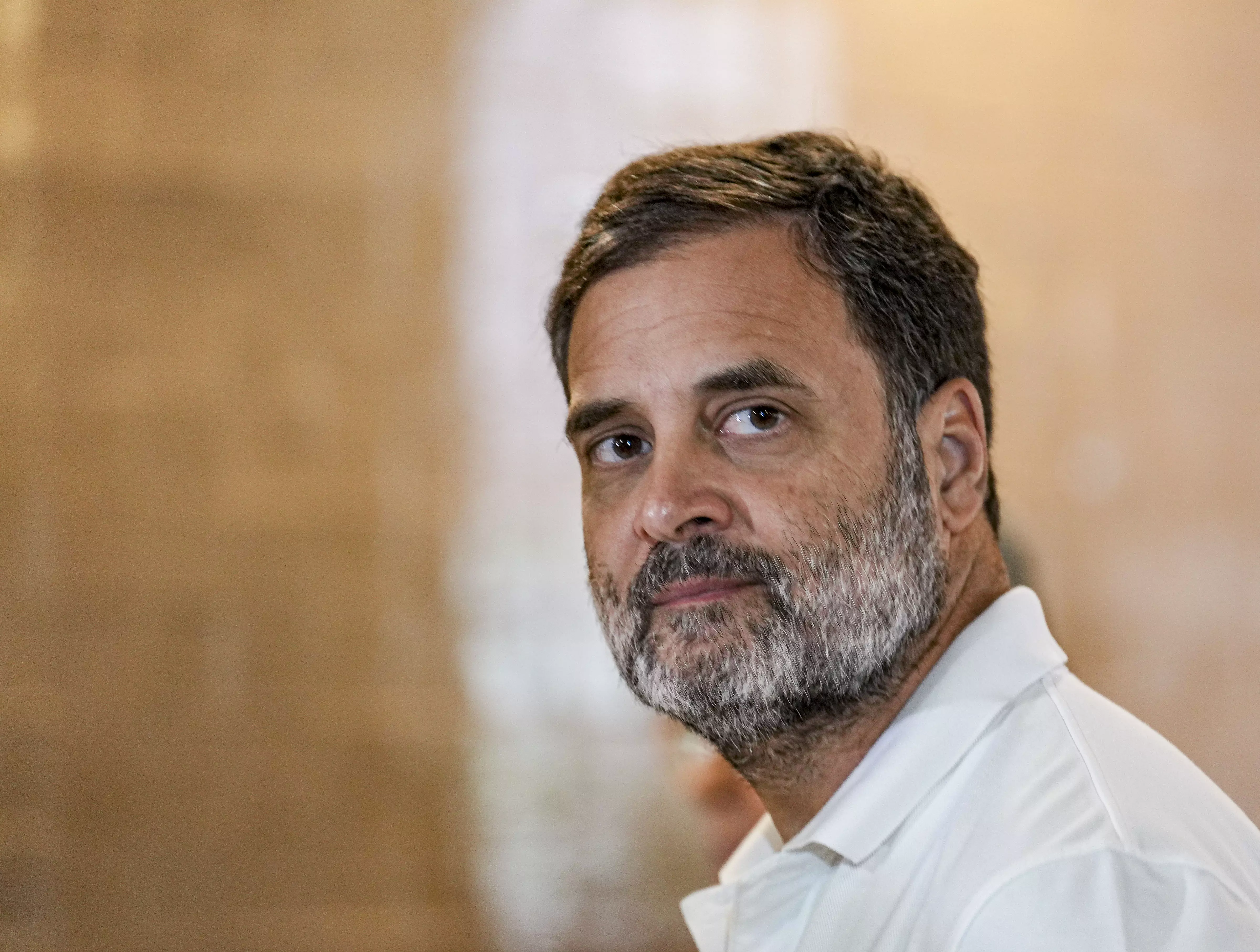July 2025 has seen Indian politics electrified as Rahul Gandhi—Leader of the Opposition in the Lok Sabha and Congress scion—takes center stage with a combative and unrelenting barrage against the ruling BJP, the Election Commission, and government economic policies. From fiery Parliament speeches to state-wide tours and viral soundbites on electoral integrity, Gandhi’s recent moves have shaken the corridors of power, uniting opposition ranks and igniting both hope and controversy across the country.
Amid crucial parliamentary debates, an upcoming national festival of Congress organization-building, and swirling allegations over India’s democratic processes, seven major flashpoints have shot Gandhi back to front-page headlines. This article analyzes the themes, fallout, and national impact of his latest outbursts—and what they might mean ahead of critical state and national elections.
Rahul Gandhi’s resurgence as a vocal opposition leader also highlights the evolving dynamics of Indian political narratives, where traditional charisma now intertwines with digital savvy. Unlike earlier eras dominated by face-to-face campaigning and controlled media messaging, Gandhi’s 2025 approach leverages social media platforms extensively—mobilizing youth, shaping public opinion, and responding swiftly to government narratives.
This digital engagement has markedly broadened his reach, especially among first-time voters and urban millennials who consume politics differently. However, this also opens Gandhi up to intensified online trolling, misinformation campaigns, and ideological polarization, making his political journey both more impactful and fraught with new-age challenges. His ability to balance grassroots connect with a sophisticated media presence will be a key determinant of sustained political relevance.
The Congress party’s structural revival seems intricately tied to Gandhi’s renewed activism, but it also exposes longstanding organizational bottlenecks. While mass membership drives and campaigns to oust “opportunists” inject fresh energy, they simultaneously risk alienating seasoned cadres if not handled sensitively. The party’s electoral prospects in critical swing states depend heavily on Gandhi’s capacity to build durable coalitions—across caste, religion, and regional divides—while nurturing credible local leadership. Internal reforms aimed at transparency and accountability, though laudable, face the practical hurdles of entrenched factionalism and resource constraints. Observers note that Gandhi’s leadership style is increasingly evolving from symbolic figurehead to pragmatic manager, positioning Congress as a more disciplined but still socially inclusive alternative amid sharply polarized politics.
Economically, Gandhi’s critique of national initiatives underscores an urgent discourse on self-reliance versus globalization. By spotlighting the dependency on imported components within “Make in India,” he appeals to segments of the population concerned about job security and indigenous industrial growth. Yet, this critique also invites scrutiny on the feasibility of rapid economic restructuring amid complex global supply chains. For policy analysts, Gandhi’s stance represents a call for nuanced industrial and trade strategies that balance protectionism with competitiveness. His messaging resonates politically but will require complementary policy frameworks and economic alliances to translate into actionable reforms. The electoral impact of this economic debate—particularly among small and medium enterprises—is being watched closely as a potential game changer.
Looking ahead, Rahul Gandhi’s 2025 political arc appears to blend aggressive contestation with attempts at consensus building. His efforts to unite opposition factions into the INDIA bloc signal a strategic acknowledgment that electoral success requires broader cooperation beyond party lines. Navigating this alliance’s internal differences, conflicting ambitions, and ideological heterogeneity will test Gandhi’s diplomatic skills. Moreover, as state and national elections approach, Gandhi faces the dual challenge of articulating a compelling alternative governance vision while managing the expectations of an electorate weary of stalemate yet cautious about change. Whether his current momentum translates into seats, influence, or systemic reforms will hinge on his capacity to sustain relevance, credibility, and mass connect during this pivotal electoral cycle.

1. Accusing the Election Commission: “100% Proof of Cheating”
The Parliament Monsoon Session was rocked when Rahul Gandhi unloaded a direct attack on the Election Commission of India (ECI), accusing it of enabling large-scale voter manipulation in both Karnataka and Bihar. Gandhi declared that Congress had “100 per cent proof” of the poll panel allowing cheating in a Karnataka constituency, specifically naming widespread voter deletions and the suspicious addition of thousands of new voters—some allegedly aged 50, 60, or even 65.
“If you think you’re going to get away with this, you’re mistaken. You’re not going to get away with it, because we are going to come for you,” Gandhi warned the ECI.
Gandhi’s accusations, echoed by leaders from Samajwadi Party, RJD, and DMK, framed the controversy over the Special Intensive Revision (SIR) of electoral rolls in Bihar as an orchestrated attempt to disenfranchise voters ahead of state elections. Protests erupted in parliament and outside, demanding a parliamentary probe and court oversight.
2. From Parliament to Streets: Uniting the INDIA Bloc
The fallout from Gandhi’s Election Commission offensive has galvanized the broader opposition alliance, known as the INDIA bloc. Wave after wave of protest—both inside Parliament and on the steps of the Lok Sabha—has spotlighted Gandhi as the opposition’s battleground commander.
Key moments:
-
Congress, SP, RJD, DMK, and others staged coordinated demonstrations, holding placards against alleged “murder of democracy”.
-
Protests have centered around the fear that marginalized communities may face disenfranchisement, as “SIR” processes are accused of targeting certain voter groups.
-
Some opposition leaders issued warnings of possible electoral boycotts if their demands went unanswered, raising the stakes nationally.
3. Parliament Drama: Gandhi’s Demand for a Voice
Tensions in Parliament soared further when Gandhi alleged that, despite his position as Leader of Opposition, he was “never allowed to speak” while BJP ministers dominated the discussion. With repeated adjournments and mounting opposition fury, Gandhi demanded a fair chance to raise issues such as Operation Sindoor—a scandal the opposition alleges implicates the government in illicit activities.
This ongoing standoff has both energized Gandhi’s base and dramatized concerns about democratic backsliding, censorship, and fair representation in the highest legislative forum. Gandhi’s remarks after a day of disruptions and protests were clear: chronic silencing of the opposition undermines the basic tenets of parliamentary democracy.

4. State-Level Surge: Bihar and Gujarat in Focus
Outside the capital, Gandhi’s activism has been deeply felt in two crucial states:
A. Bihar Elections:
As Bihar heads toward pivotal state elections, Gandhi is orchestrating a Congress revival by focusing on Dalit, OBC, women, and youth outreach. In 2025, the party has repositioned itself with a new Dalit state president and by ramping up promises for marginalized groups. Gandhi’s repeated visits to Bihar aim to recapture ground lost since the 1990s, as Congress pursues aggressive organization changes and tactical alliances.
B. Gujarat Organizational Push:
Gandhi is set to visit Gujarat’s Anand district on July 26 for a high-profile Congress training camp, part of the party’s 2025 “Organizational Festival.” The move follows the earlier “Sangathan Sirjan Abhiyan” aimed at purging “BJP sympathizers” from party ranks and creating a stronger, more accountable local leadership. In March, he bluntly told party workers to purge up to “twenty or thirty” opportunists as necessary.
5. “Make in India is Just Assembling”: Economic Critique Goes Viral
Cutting through economic optimism from the government, Gandhi launched a critique of the “Make in India” initiative, claiming that most manufacturing is just assembly work dependent on imported Chinese components. Using Greater Noida’s TV factories as a case study, he highlighted the lack of ground-level support for India’s small entrepreneurs:
-
“Until India becomes self-reliant in production, talks of jobs, growth, and ‘Make in India’ will remain mere speeches.”
-
Gandhi accused the government of favoring monopolistic corporates over genuine industry-building, and called for robust policy reforms to truly compete with China.
His viral videos and social media posts on the topic won him praise from workers and small business owners anxious about shrinking margins and job creation.
6. Warning of Electoral Integrity Crisis
The ongoing battle over voter rolls and electoral integrity is now a staple of Gandhi’s 2025 message. He claims the Congress has “irrefutable evidence” of voter roll tampering—especially targeting senior citizens as newly-created voters in districts where the party’s prospects are high.
Gandhi’s message has found receptive audiences nationwide as faith in election processes wavers. The Congress has promised public disclosure of its findings, intensifying scrutiny on the ECI amid already fraught public trust.
7. New Role, New Assertiveness: LoP as National Torchbearer
2025 marks a turning point in Gandhi’s career as he emerges as a national rallying point for opposition unity and institutional challenge. From taking sharp jabs at the government in the Lok Sabha to reigniting state-level campaigns and party-building efforts, Gandhi’s mix of on-ground activism and social media communication reflects a renewed political strategy.
Key highlights of his leadership include:
-
Mass membership drives within Congress for grassroots revival.
-
Restructuring the party across states plagued by defections.
-
A pledge for greater “system of accountability” for all office bearers and representatives.
-
Setting an aggressive tone for holding the ruling party accountable inside and outside parliament, promising “we will come for you” when faced with systemic failures.
Fallout and National Impact
Gandhi’s recent campaign has had far-reaching political, institutional, and social consequences:
-
Government Response: The ECI and government have rejected Congress’ claims, insisting that all voter revisions target only ineligible names and the deceased. They have branded opposition protests as a desperate bid to evade resurgent ground realities.
-
Public Debate: Media and civil society have taken up the charges—examining whether large-scale voter additions and deletions reflect fraud or overdue system cleaning. The issue has seeded doubts in the public mind at a time when trust in institutions is already strained.
-
Opposition Unity: Gandhi’s strong posture has catalyzed a fragile but growing national alliance, positioning him as a genuine alternative voice to the ruling party—one able to combine Parliament strategy with street protests, state revivals, and digitally viral communication.


Conclusion: Rahul Gandhi’s 2025—A Rebellion or a Realignment?
With the monsoon session in full swing, state elections looming, and Congress itself in the eye of a reboot, Rahul Gandhi is emerging in 2025 as both the torchbearer of opposition unity and a lightning rod for controversy. His blunt allegations against the Election Commission, strategic state campaigns, and economic policy critiques have exposed fault lines in Indian politics—challenging institutional narratives and demanding new transparency in democratic processes.
Only time will tell if this assertive posture leads to real policy change, revival of national opposition, or merely further polarization. But one thing is clear—a political thunderstorm has arrived, with Gandhi at its epicenter, and the nation is watching every move, every word, every promise.
Follow: Rahul Gandhi
Also Read: Harshvardhan Jain’s Fake Embassy Ghaziabad: A 7-Year Diplomatic Fraud Exposed

